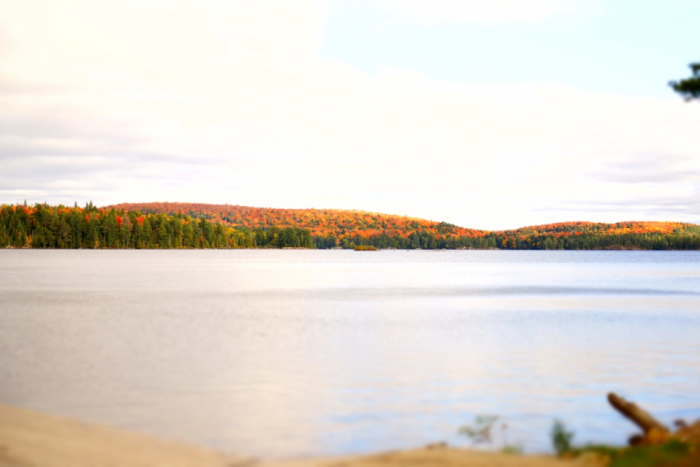Toronto, Canada’s bustling metropolis, is not only a hub of culture, arts, and cuisine but also a launchpad for exploring the stunning landscapes and charming towns that lie just beyond its outskirts. For locals and visitors alike looking to escape the city’s frenzy for a day, the options are plentiful and diverse. From the scenic vineyards of Niagara-on-the-Lake to the serene waters of the Thousand Islands, these day trips promise adventure, relaxation, and a chance to immerse yourself in Ontario’s rich heritage. This blog uncovers five unmissable day trips from Toronto, each offering unique experiences that cater to nature lovers, history buffs, and thrill-seekers alike.
Toronto and its surrounding area is renowned for a vibrant mix of cultural diversity, iconic landmarks, and natural beauty. The city itself is home to the famed CN Tower, one of the world’s tallest freestanding structures, offering breathtaking views of the cityscape. Just a short drive away, the majestic Niagara Falls provides a spectacle of nature’s power, while the nearby Niagara-on-the-Lake is celebrated for its well-preserved 19th-century village and flourishing wineries. The region’s rich heritage is also showcased through its numerous museums and historical sites, such as the Royal Ontario Museum and the historic district of Distillery District, offering insights into Canada’s past and present.
Stepping out of the urban sprawl for a day can transform into an exhilarating adventure, presenting opportunities to not only explore Ontario’s breathtaking natural beauty but also to bond with friends and family in a completely different setting. The thrill of discovering hidden gems, whether it’s the tranquil beaches of Sandbanks Provincial Park or the rocky terrains of the Bruce Peninsula, instills a sense of adventure and excitement. For those planning these escapades, transportation is a breeze with the availability of car rentals for solo travelers or couples, providing the freedom to explore at one’s own pace. Larger groups have the convenient option of a charter coach bus, ensuring everyone can partake in the joy of the day’s discoveries together, without the hassle of coordinating multiple vehicles. These adventures beyond Toronto’s boundaries are not just trips; they’re an opportunity to create lasting memories and experience the diverse landscapes that Ontario has to offer.
So where should you visit on a day out of the city? Here are five top ideas.
1. Niagara-on-the-Lake
Niagara-on-the-Lake, often heralded as Ontario’s loveliest town, is a treasure trove of history, wine, and beauty rolled into one. Situated at the mouth of the Niagara River, this quaint town offers visitors a chance to step back in time with its well-preserved 19th-century architecture. The region is also Canada’s premier wine country, hosting over 20 wineries that produce some of the country’s finest vintages, making it a must-visit for wine lovers. Beyond wine, the Shaw Festival, a major Canadian theatre festival, attracts arts lovers. The picturesque streets, adorned with flowers and boutiques, offer a serene escape from the hustle of city life.
2. Bruce Peninsula National Park
Bruce Peninsula National Park is a rugged sanctuary for nature lovers and adventurers alike. Located on a narrow stretch between Georgian Bay and the main basin of Lake Huron, this natural gem features crystal-clear waters, dramatic cliffs, and ancient cedar forests home to the elusive Massasauga rattlesnake. The park is famous for the Grotto, a stunning sea cave with azure waters, accessible by hiking. For those seeking tranquility, the park’s numerous trails and camping sites offer an immersive experience within Canada’s stunning wilderness. It’s a perfect spot for hiking, kayaking, and stargazing, promising an unforgettable adventure with every visit.
3. Thousand Islands
The Thousand Islands constitute an archipelago straddling the Canada-U.S. border in the Saint Lawrence River. Offering breathtaking natural beauty, the area is a paradise for boaters, fishermen, and nature enthusiasts. Visitors can explore historic lighthouses, opulent mansions including the famous Boldt Castle on Heart Island, and quaint waterfront communities. Cruises offer a relaxing way to experience the vast beauty of this region, providing insight into the area’s rich history and unique geology. The Thousand Islands also offer excellent opportunities for kayaking, with countless inlets and islands awaiting discovery by those eager to paddle through these tranquil waters.
4. Sandbanks Provincial Park
Sandbanks Provincial Park, nestled on the shores of Lake Ontario, boasts some of the most beautiful beaches in Canada, characterized by their rolling sand dunes and golden sands. It’s an ideal destination for those looking to relax by the water or engage in water sports such as sailing, windsurfing, and kayaking. The park also offers several hiking trails, which meander through wetlands and dune habitats, offering glimpses of the diverse local wildlife. Unique in its landscape, Sandbanks provides a stunning backdrop for picnics, swimming, and sunset watching, making it a perfect day trip for families and nature lovers.
5. Algonquin Provincial Park
Algonquin Provincial Park, Ontario’s first provincial park, is a vast interior of maple hills, rocky ridges, and thousands of lakes. An outdoor enthusiast’s dream, the park offers a plethora of activities year-round, from canoeing and kayaking in the warmer months to cross-country skiing and dog sledding in the winter. The park is also a haven for wildlife watchers, with moose, beavers, and hundreds of bird species calling it home. Its extensive network of hiking trails caters to all skill levels, providing breathtaking views and the chance to immerse oneself in the serenity of Canada’s wilderness.
Exploring the natural wonders and historical treasures of Ontario provides an enriching escape from the urban routine. From the serene beauty of Niagara-on-the-Lake to the adventurous landscapes of Algonquin Provincial Park, each destination offers its own unique charm and experiences. These day trips are not only invigorating, but they also deepen your connection with Canada’s diverse and stunning environment, making every visit memorable. Whether you seek tranquility, adventure, or historical exploration, Ontario’s day trips provide something for everyone. Immerse yourself in the natural beauty and rich culture that make these destinations unforgettable.



